30 greatest Test cricket innings of all time: from Botham to Bradman, Lara to Stokes and everything in between
Jonathan Liew counts down his greatest innings of the Test cricket era in the wake of Ben Stokes's heroics at Headingley to ask: was it the best knock of all time?

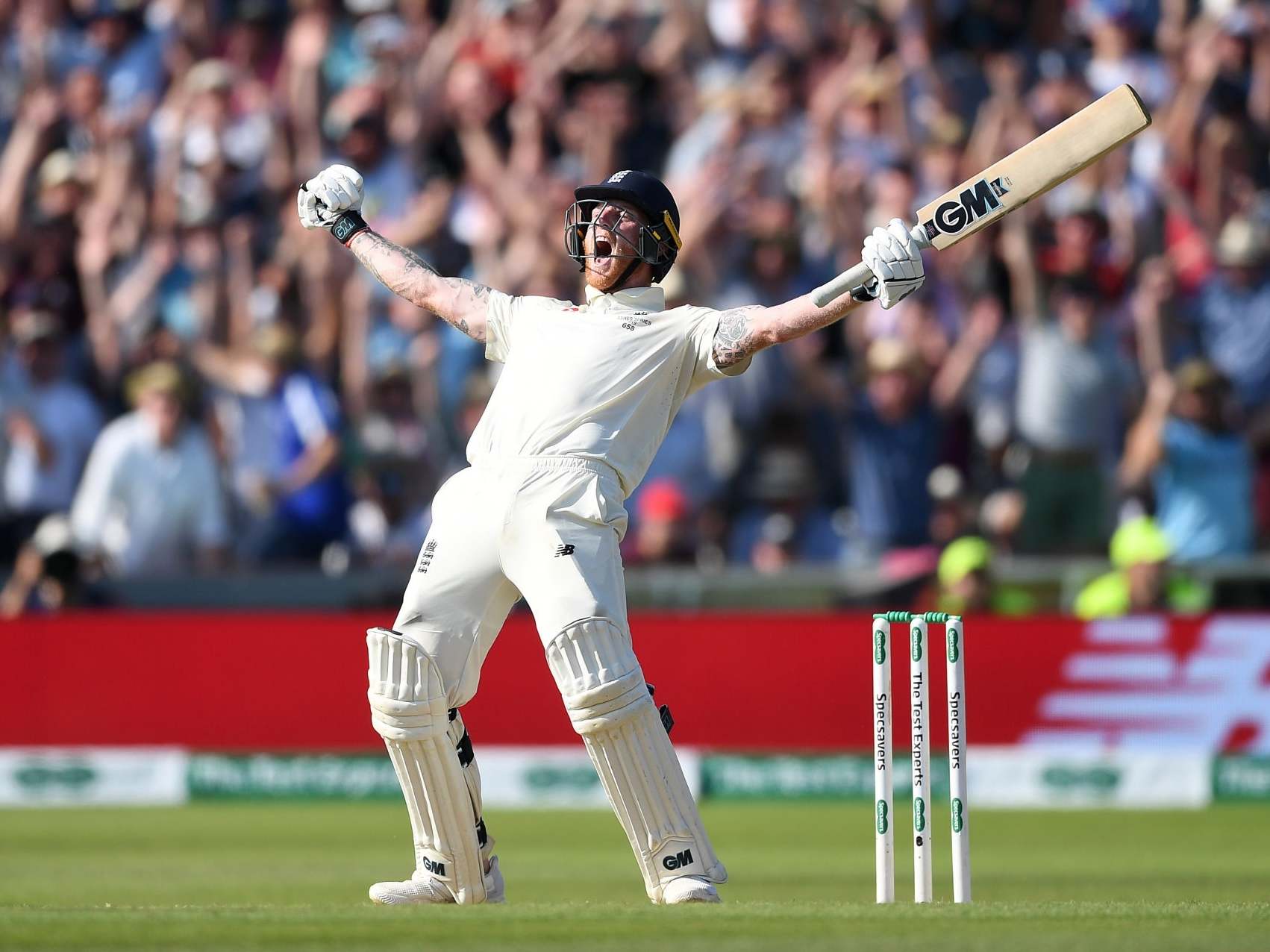
Your support helps us to tell the story
From reproductive rights to climate change to Big Tech, The Independent is on the ground when the story is developing. Whether it's investigating the financials of Elon Musk's pro-Trump PAC or producing our latest documentary, 'The A Word', which shines a light on the American women fighting for reproductive rights, we know how important it is to parse out the facts from the messaging.
At such a critical moment in US history, we need reporters on the ground. Your donation allows us to keep sending journalists to speak to both sides of the story.
The Independent is trusted by Americans across the entire political spectrum. And unlike many other quality news outlets, we choose not to lock Americans out of our reporting and analysis with paywalls. We believe quality journalism should be available to everyone, paid for by those who can afford it.
Your support makes all the difference.30) Steve Smith 144 (Australia v England, Edgbaston 2019)
You forgot about this one, didn’t you? Smith’s finest century, coming in his first Test innings since returning from a one-year ban, was hailed at the time as one of the great Ashes knocks. And no wonder: in helpful bowling conditions, rescuing Australia from 122-8 and ultimately winning them the match, this was Smith at his very best, looking at times as if he was playing an entirely different sport to the other 21 men on the field. Now fated to be remembered as only the second-best innings of the series, which is a great shame. The good news for Smith is that he still has time to top it.
29) Martin Donnelly 206 (New Zealand v England, Lord’s 1949)
The first ever Test double-century for New Zealand, Donnelly’s innings ticked many of the boxes for inclusion in this list: style, technical excellence, immaculate tempo as he moved through the gears from extreme care to extreme violence, and genuine significance, helping New Zealand avoid defeat in an overseas Test series for the first time in their history.
28) Sunil Gavaskar 221 (India v England, The Oval 1979)
Sometimes great innings are anointed in hindsight, and occasionally the reverse is true. Had India succeeded in chasing down an improbable 438 in four sessions, as they so nearly threatened to do here when 366 for 1 with 12 overs remaining, then Gavaskar’s magnificent double-hundred would have marched straight into the pantheon. As it was, India’s captain Venkataraghavan messed around with the batting order, Mike Brearley cynically slowed England’s over rate, and India fell an agonising nine runs short.
27) Mark Butcher 173* (England v Australia, Headingley 2001)
Yes, it was a dead rubber, and yes, it was a pretty generous declaration by Australian stand-in captain Adam Gilchrist, setting England 315 in decent batting conditions. But none of that should take anything away from Butcher’s otherworldly innings, taking apart an Australian attack of McGrath, Gillespie, Lee and Warne and forcing a nation reared on cricketing mediocrity to start believing in miracles again.
26) Marcus Trescothick 180 (England v South Africa, Johannesburg 2004-05)
The great innings seem to come almost out of nowhere. Such was the case with Trescothick’s wondrous assault at the Wanderers, breaking the deadlock in more ways than one. With the series tied at 1-1 and the match meandering towards a draw on the fifth morning, Trescothick seized the initiative, marmalising an attack of Pollock, Ntini, Kallis and Steyn and setting up a famous win later that evening.
25) Nathan Astle 222 (New Zealand v England, Christchurch 2001-02)
Still, after almost two decades, the fastest Test double-century by a distance, and still the highest second-innings score in a losing cause. England were toasting a hard-fought victory when they took the ninth wicket with 217 runs still required. Instead, in the space of less than an hour Astle (supported by a half-injured Chris Cairns) smashed 118 of them in a blitz of pure, unadulterated hitting.
24) Viv Richards 291 (West Indies v England, The Oval 1976)
Parched earth. Pure genius. At the end of Britain’s hottest summer, an innings of scorching beauty and irrepressible arrogance. Richards is a big man, but nothing about this knock screams violence or even overt power. Everything is timing, movement, balance, a simple system of weights and levers engineered to manoeuvre the ball towards the boundary as efficiently and stylishly as possible. Richards played many harder innings in his two-decade career, but he never looked quite as unutterably in control as he did here.
23) Sanath Jayasuriya 253 (Sri Lanka v Pakistan, Faisalabad 2004-05)
Anantha Narayanan of ESPNCricinfo has this as the third greatest innings of all time, but interestingly it didn’t initially have the makings of greatness. Opening the innings on day three with a small deficit to clear, Jayasuriya looked some way short of his best, caught off a Shoaib Akhtar no-ball and playing second fiddle to Kumar Sangakkara and Mahela Jayawardene. Then, on the fourth morning, with only the tail for company, he catapulted into life, producing the sort of astonishing, jaw-dropping strokeplay that marked out his very finest knocks.
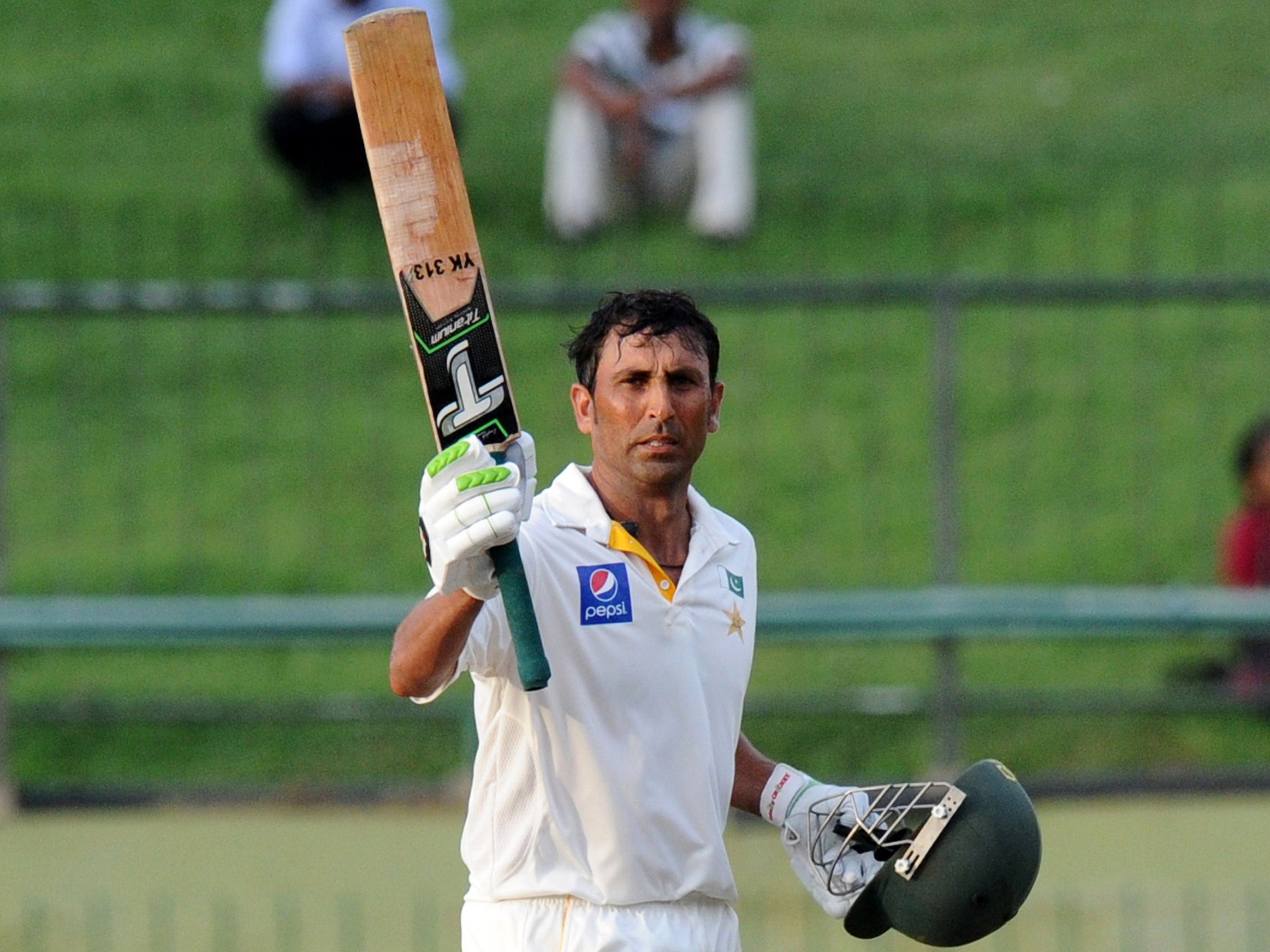
22) Younus Khan 171* (Pakistan v Sri Lanka, Pallekele 2015)
A highly underrated modern classic. Coming in at 13-2 in the fourth innings chasing an unlikely 377 for victory, Younus played a chanceless hand to see Pakistan to a seven-wicket victory, one that was all the more devastating not because it felt outlandish but because it felt utterly pre-ordained: a genius of his craft, bending history and circumstance to his unflappable will.
21) Dave Nourse 93* (South Africa v England, Johannesburg 1905-06)
The only non-century on this list, and the only one you may not have heard of, but a milestone innings in Test history. South Africa had never won a Test match in almost two decades of trying when Nourse came to the crease at 105-6 chasing 284 - and this, in an era when scores were far lower than they were today. In front of a partisan crowd wildly cheering every run, Nourse saw South Africa to a narrow one-wicket victory, paving the way for their first ever series win over England.
20) Virender Sehwag 201*(India v Sri Lanka, Galle 2008)
Sehwag virtually invented this sort of innings: the jaw-dropping first-morning assault against fresh bowlers and the new ball that set the tone for the game, and occasionally swung entire series. India had been spun to distraction by Muttiah Muralitharan and Ajantha Mendis in the previous match at Colombo, and so in the second Test Sehwag opted for counter-attack. His double-century took just 231 balls and yet was notable as much for its sound judgement as its indiscriminate hitting, only cutting loose on day two as he was joined by the tail. By the time the innings ended, India were 329 all out - and Sehwag had still not been dismissed.
19) Dean Jones 210 (Australia v India, Chennai 1986-87)
“I can’t remember a thing after 120,” Jones would later say of his eight-hour epic, played in cloying heat and through severe dehydration, vomiting and incontinence. By its end, Jones had lost eight kilograms - it would take him almost a year to put the weight back on - and had to spend the rest of the day on a saline drip. Most agonisingly of all, it didn’t even secure victory: the match would become on the second tie in Test history.
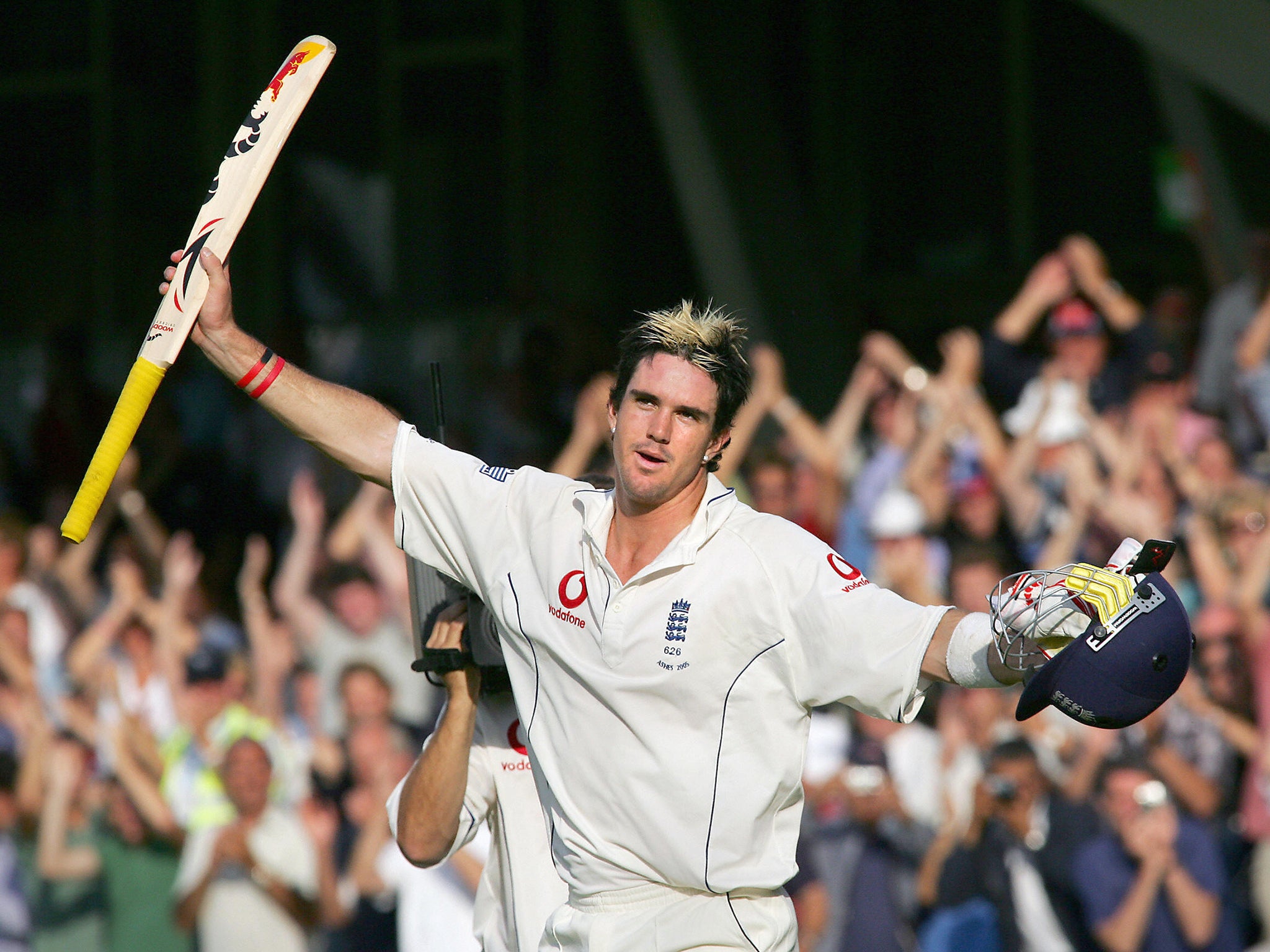
18) Kevin Pietersen 158 (England v Australia, The Oval 2005)
An innings that seemed to create its own myth almost as if it was being played: the early chances, the staggering assault on Brett Lee after lunch, the final valedictory flourishes, the helmet lifted, the blonde Mohican proud if a little crumpled. But even if it hadn’t secured an Ashes win, Pietersen’s innings would have been a masterclass in its own right: carefully seeing off McGrath and Warne, taking bold but calculated risks against Lee and Shaun Tait, sensing the moment and seizing it utterly. The fact that it led to English cricket’s greatest triumph in a generation merely gilded the legend: an innings that nobody who saw it will ever forget.
17) Stan McCabe 232 (Australia v England, Trent Bridge 1938)
An innings that owes its place in Ashes history largely to the words of Don Bradman, who reportedly ordered his team-mates onto the Trent Bridge balcony to watch their colleague batting, on the basis that they may not see its like again. Characterised by daring, innovative strokeplay and quick scoring - McCabe’s 232 came out of just 300 added while he was at the crease - McCabe’s innings didn’t lead to victory, but did secure immortality. “Stan,” Bradman told him on his return to pavilion, “I would give a lot to be able to play an innings like that.”
16) Charles Bannerman 165* (Australia v England, Melbourne 1876-77)
Statistically, one of the most freakish innings ever played in Test cricket. Bannerman’s 165, played with a broken thumb that would later force him to retire hurt, came out of a total of just 245, a ratio that still - almost a century and a half later - hasn’t been surpassed. How good was it? Well, we don’t really know. No photographs of Bannerman in action exist, and contemporary reports of the game are scant. So there it sits, a numerical anomaly, a figment of the imagination, in a world all of its own. It may not have been the greatest. But it was the first. And in a sport that has always celebrated its pioneers, its trailblazers and its record-setters, that’s worth recognising.
15) Azhar Mahmood 132 (Pakistan v South Africa, Durban 1997-98)
A surprising entry at No 8 on Wisden’s 2001 list of the greatest Test innings of all time, Azhar’s inclusion owes itself to several key factors. Firstly, the quality of the attack: a peak Allan Donald, a young Shaun Pollock, Fanie de Villiers and Lance Klusener. Secondly, the circumstances: Pakistan were 89-5 when he walked in, yet in the space of barely a session Azhar transformed the feel of the game, scoring 78 per cent of the runs while he was at the crease. Finally, and most poignantly, there was the shock value: this was only his eighth Test, and so this knock was accompanied by the sort of buzz often associated with the emergence of a generation-defining talent. Instead, Azhar never quite fulfilled the potential of his early flings. His third Test century would, as it turn out, also prove to be his last.
14) Kevin Pietersen 186 (England v India, Mumbai 2012-13)
The 158 at The Oval may have been his breakthrough, but this was Pietersen’s true magnum opus. On a turning pitch in helpful conditions, Pietersen played the sort of innings that no other batsman on earth could have managed, breaking India’s spin attack hour by hour, session by session, until he was doing exactly what he wanted with it. Sweeps, reverse sweeps, slog sweeps, irradiant cover drives: this was Pietersen at his match-winning best, helping England to their first series win in India in a generation.
13) Gordon Greenidge 214* (West Indies v England, Lord’s 1984)
Sometimes the hallmark of great innings is how easy, how inevitable, they look in retrospect. And so it is with Greenidge’s majestic fourth-innings hundred at Lord’s, against a new-ball attack (Willis and Botham) that would finish with more than 700 Test wickets, and seeing the West Indies to a remarkable chase of 344-1 in just over two sessions. Posterity would take it neatly into its stride, into a wider narrative of whitewash and English decline. But at the time, there was nothing routine about it.
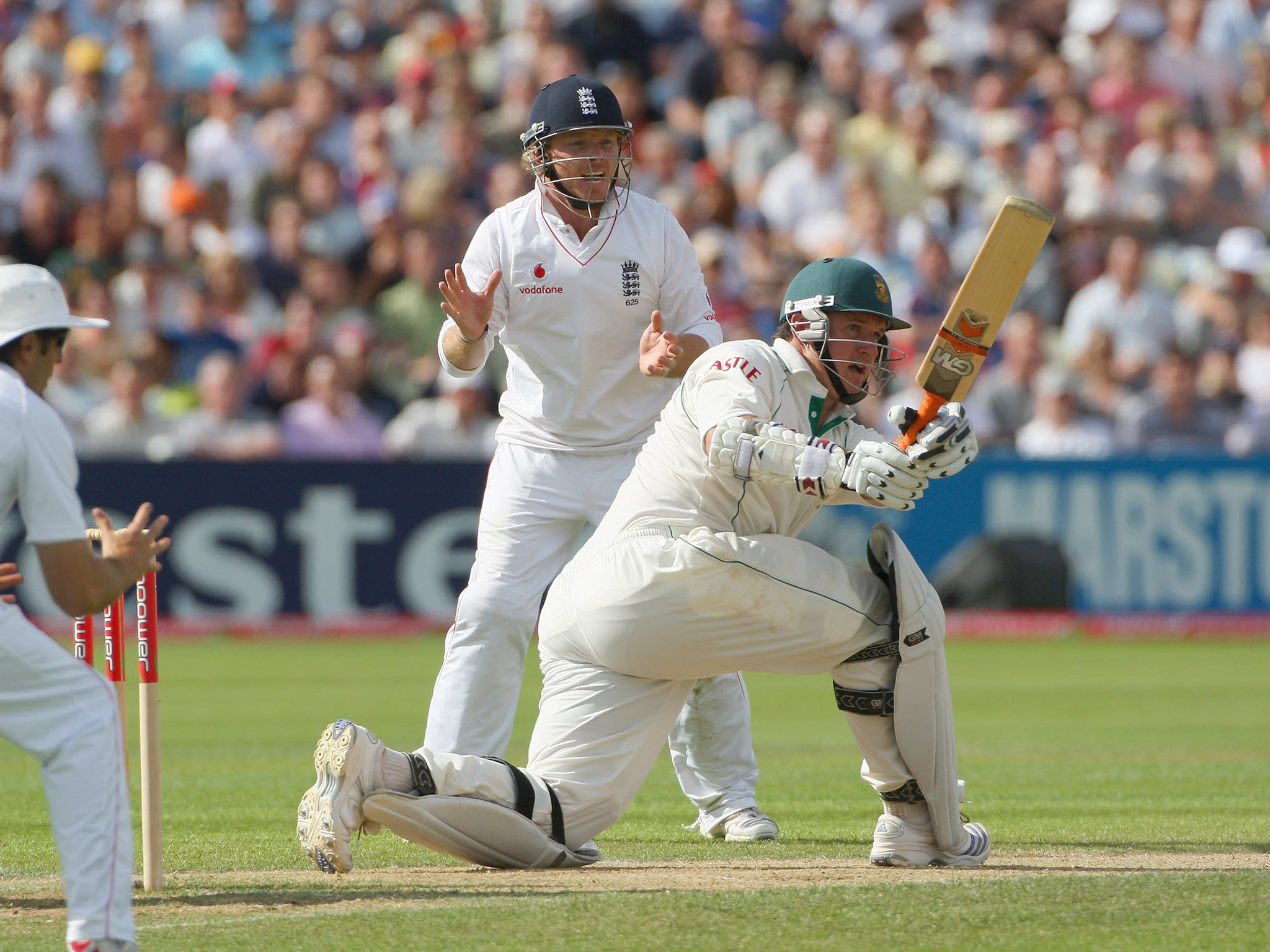
12) Graeme Smith 154* (South Africa v England, Edgbaston 2008)
An innings that almost single-handedly secured South Africa’s first series win on English soil since readmission, chasing down a fourth-innings target of 283 on a turning Edgbaston wicket against Andrew Flintoff and Monty Panesar in full flow, and seeing off his opposite number Michael Vaughan in the process. What made it all the more impressive was that Smith was in serious pain at the time, with back and elbow injuries that meant he could barely get out of bed in the morning.
11) Don Bradman 270 (Australia v England, Melbourne 1936-37)
When Wisden compiled their 2001 list, this innings came at the top. I’m not even sure it’s Bradman’s best: one of his tougher, grittier innings, produced through illness and in the trickiest of circumstances. Twenty-three wickets had fallen for just 373 runs when Bradman strode to the wicket on a drying MCG pitch, having demoted himself to No 7 in an attempt to avoid the worst of the conditions. Australia were 2-0 down in the series and over seven and a half tireless hours, he batted England out of the game. No team before or since has ever come back from two down to win a Test series, and Bradman’s pivotal knock was the start of a remarkable comeback.
10) Ian Botham 149* (England v Australia, Headingley 1981)
Almost three decades on, an innings that still divides opinion. For some, it’s the very pinnacle: the signature innings of a cricketing genius in full flow, grasping victory from the jaws of defeat, turning an Ashes series on its head and enthralling a nation. For others it’s a rowdy thrash, a summer blockbuster rather than a serious piece of cinema, and not even his best knock of the summer (Brearley, his captain, thought his 118 at Old Trafford two Tests later the superior innings). Perhaps the truth lies somewhere in between. Yes, it was agricultural, and blessed by more than a little good fortune, but in many ways that was the point: Botham ripping apart not just the Australian bowlers but the very notion of risk itself. All this out of the ashes of his captaincy, in a run of poor form, and with the Ashes slipping away. The stuff of dreams, however you want to frame it.
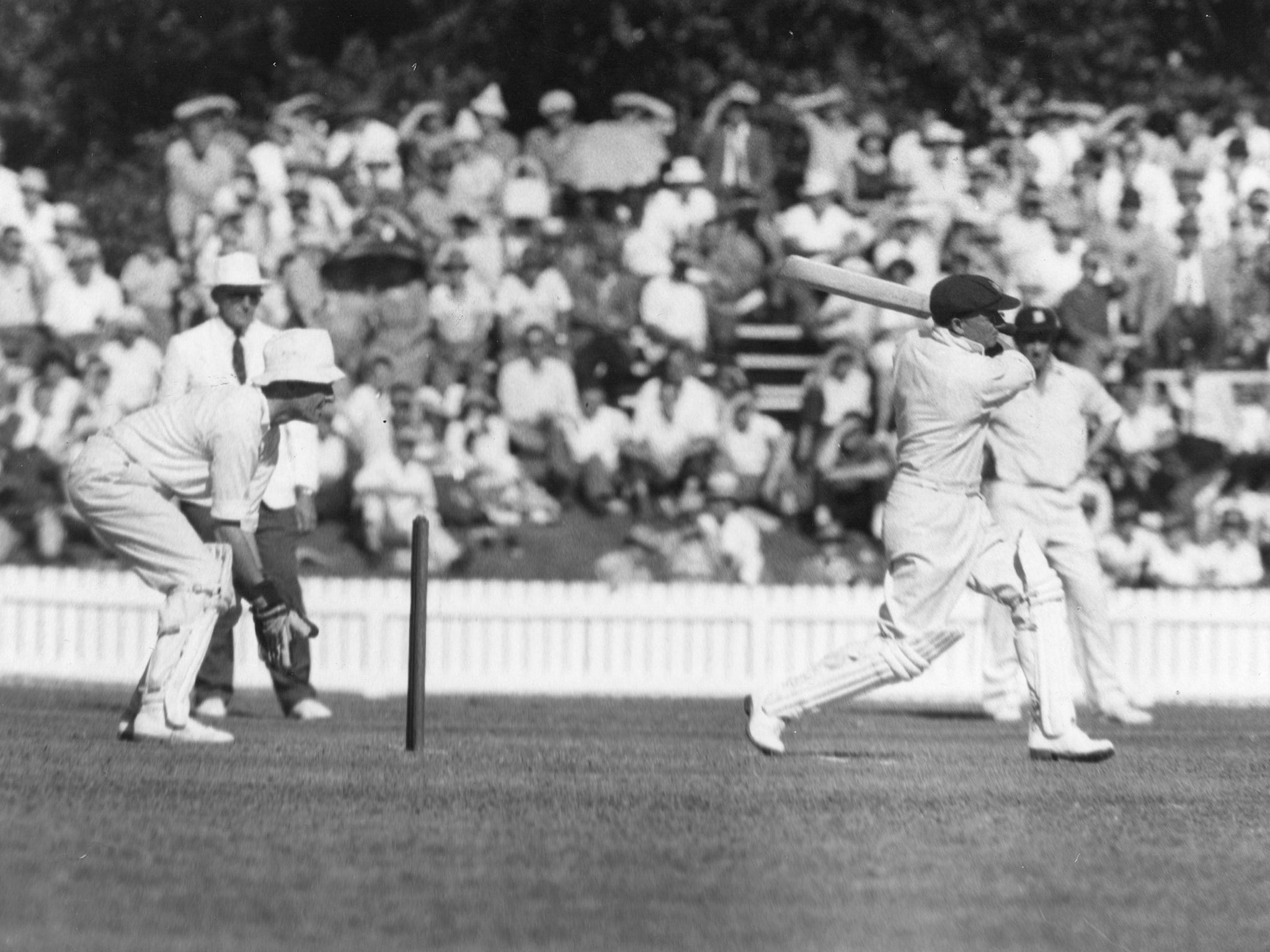
9) Don Bradman 254 (Australia v England, Lord’s 1930)
You could have made a coherent case for at least half a dozen Bradman turns as his very best: the 334 in a day at Headingley, his unbeaten 299 against South Africa, perhaps even the 103 at the MCG against England’s ferociously successful Bodyline tactics. But Bradman himself rated this as the most technically accomplished innings of his life, which should be good enough for us. It was his first tour to England, and only his sixth Test, and thus it remains his most jaw-dropping knock: a display of calculated, perfected slaughter by a 21-year-old prodigy that shocked everyone who saw it. “Practically without exception, every ball went where it was intended,” he later wrote.
8) Graham Gooch 154* (England v West Indies, Headingley 1991)
Reckoned by some to be the greatest ever, and on a purely statistical basis they may have a point: Gooch’s score came out of a total of 252, on a tricky pitch against an attack of Ambrose, Walsh, Patterson and Marshall. It helped to set up England’s first home win against the West Indies for 22 years, and what those present remember above all is the mastery: on a tricky surface and with wickets falling all around him, Gooch pulled and drove with the bullish insouciance of a batsman facing club bowlers on a Southend road. It wasn’t quite as chanceless as people remember: there was one uppish drive early on just out of the reach of cover, as well as a few plays and misses. And the West Indies attack wasn’t quite at its best, Ambrose aside: Patterson was struggling for rhythm, and Marshall was shaking off a hamstring injury. But as a study of grace under pressure, this takes some beating.
7) Roy Fredericks 169 (West Indies v Australia, Perth 1975-76)
If you could transport me back through time to watch one innings in the flesh, this would be it: the Waca at its murderous peak, Lillee and Thomson at theirs, and standing up to them - without a helmet, obviously - the veteran opener Fredericks, not simply withstanding the storm but thrillingly, daringly blowing it back. In an age where a strike rate of 50 made you a dasher, Fredericks raced to his century in just 71 balls, hooking and cutting with no thought for his own safety. Lindsay Hassett, who played with Bradman for a decade, declared it the greatest innings he’d ever seen in Australia.
6) Adam Gilchrist 149* (Australia v Pakistan, Hobart 1999-2000)
If you were being cheeky, you could point out that this innings probably isn’t even Gilchrist’s best 149 (his ruthless assault from the top of the order in the 2007 World Cup final certainly rivals this). But this was our introduction to the Gilchrist hurricane. It’s only his second Test, and he’s still to win over a public sore at the axing of Ian Healy. Ricky Ponting has just been dismissed for a duck, Australia are 126-5 in pursuit of 369, and Pakistan are about to level the series. Nobody except Gilchrist sees what’s about to come next: with Justin Langer as his foil, Gilchrist slams a barely believable 149 not out off 163 balls, putting on 238 in two sessions and winning the match virtually on his own. And the attack that day? Wasim Akram, Waqar Younis, Shoaib Akhtar, Saqlain Mushtaq. Strewth.
5) Gilbert Jessop 104 (England v Australia, The Oval 1902)
The shortest innings on the list, at just an hour and a quarter. But in those 77 minutes, Jessop wrote himself into Ashes mythology. England were 48 for 5 when he walked in, the target 263 on a wearing and difficult pitch. What happened next was an innings that presaged the birth of Twenty20 by over a century. Jessop reached his hundred off just 76 balls, with 17 fours and an all-run five: although under today’s rules, many of his fours which cleared the boundary by a distance would count as sixes. All this in an age when scoring was far harder than it is these days, and bats not nearly as powerful. Comparisons, as they say, are odious. But there's little doubt that the passing of time does innings like Jessop's a grave disservice.
4) VVS Laxman 281 (India v Australia, Kolkata 2000-01)
The greatest Test innings ever played in Asia. It’s easy to forget now just how dominant Steve Waugh’s Australians were, not just in terms of pure results, but stylistically: by the turn of the century, the Australian way of snarling grit and naked, full-throttle aggression had become the only sure method of winning Test matches. Over 10 and a half sumptuous hours, Laxman changed all that: coming in early on day two and not departing until early on day five, every elegant run roared by a raucous Eden Gardens crowd. By the time he was done, Australia weren’t just exhausted, and beaten, but tarnished. Laxman had ground them into the dirt.
3) Brian Lara 153* (West Indies v Australia, Barbados 1998-99)
2) Ben Stokes 135* (England v Australia, Headingley 2019)
1) Kusal Perera 153* (Sri Lanka v South Africa, Durban 2018-19)
Now the euphoria of Headingley has died down, I’m satisfied that this trilogy of innings, all unbeaten match-winning knocks in the fourth innings that secured victory by a single wicket, are the three greatest ever played. Scoring a century in Test cricket against an average attack in average circumstances is hard enough: to do so with a No 11 batsman for company, with zero margin for error, with match and series on the line, against some of the all-time great bowling attacks, elevates them to a level of their own.
All came out of extreme adversity. Lara’s West Indies were set 308 to win by Steve Waugh’s Australians, and when Carl Hooper departed they were 105-5. Against one of the all-time great attacks - McGrath, Gillespie, Warne and MacGill - Lara thrillingly took on the challenge after a watchful start, hitting the spinners to distraction, sledging McGrath with impunity, shielding the tail as wickets tumbled around him, hitting the last nine runs himself with the hapless but heroic Courtney Walsh at the other end.
Stokes’s innings was a Test knock, a one-day innings and a Twenty20 thrash all in one. At one stage in England’s chase of 359, he was on 2 off 66 balls: an extraordinary feat of restraint for a player who possesses every shot in the book. Then, with Jonny Bairstow for company he moved through the gears to whittle the target down to size. Then, with 73 runs required and only Jack Leach for company, he let loose. His last 64 runs came off just 34 balls and contained some of the most audacious, brilliant shotmaking ever seen on an English cricket ground.
Perera’s was perhaps the unlikeliest of the lot. Set 304 to win by South Africa, a valiant Sri Lankan effort appeared to have ended in failure at 226-9. But Perera had other ideas. Against a strong attack of Dale Steyn, Kagiso Rabada, Duanne Olivier and Keshav Maharaj, and with only Vishwa Fernando for company, Perera feasted on the diet of bouncers served up to him, pulling hard to the leg-side, despatching the spinner (fleetingly, and attractively, sans helmet), scampering twos, gradually chipping away at the target until South Africa wilted under the pressure.
None of them is a perfect innings. Had DRS been in existence 20 years ago, Lara would probably have been out early in his innings at Bridgetown when he padded up to Stuart MacGill playing no shot. That same over, he offered a leading edge that was maybe an inch away from being caught and bowled. Perera could have been out to any number of short deliveries early in his innings. Stokes, meanwhile, was quite literally out: Nathan Lyon, who just a ball earlier had fumbled a certain run-out chance that would have secured Australia victory by one run, had him plumb LBW, only Australia had already burned their final review.
So how to sort them? In terms of pure theatre, Stokes and Lara have the edge: a full house, an historic rivalry and just a touch of needle. If it’s invention and inspiration, you’ll lean towards Stokes and Perera, both of whom played outrageous reverse sweeps that not only found the boundary but significantly shifted the window of possibility. If it’s impact you’re looking for, neither Lara nor Stokes’s efforts (yet) ended up winning a Test series. Perera’s innings, meanwhile, was a watershed moment: after victory in the following Test, Sri Lanka would become the first ever Asian side to win a Test series in South Africa.

Perhaps the only real way of separating them, then, is by using the Richter Scale. Lara’s innings, as brilliant as it was, lay just within the assumed parameters of what he was deemed capable of achieving. Similarly Stokes, whose talent has never been in doubt, and who after winning a World Cup final may already have gained a taste for the impossible.
Maybe that’s unfair on both, penalising them for their own genius and pedigree. But to my mind, Perera’s is the one innings on this list that seemed to come from absolutely nowhere: a lightning bolt from a player whose average of 29 to that point (and just nine since) offered no portent whatsoever of the outrageous guts and sumptuous skill that would thoroughly violate our expectations of Test cricket and win a landmark series as a result. If that’s not the very definition of the greatest innings of all time, I don’t know what is.
Join our commenting forum
Join thought-provoking conversations, follow other Independent readers and see their replies
Comments